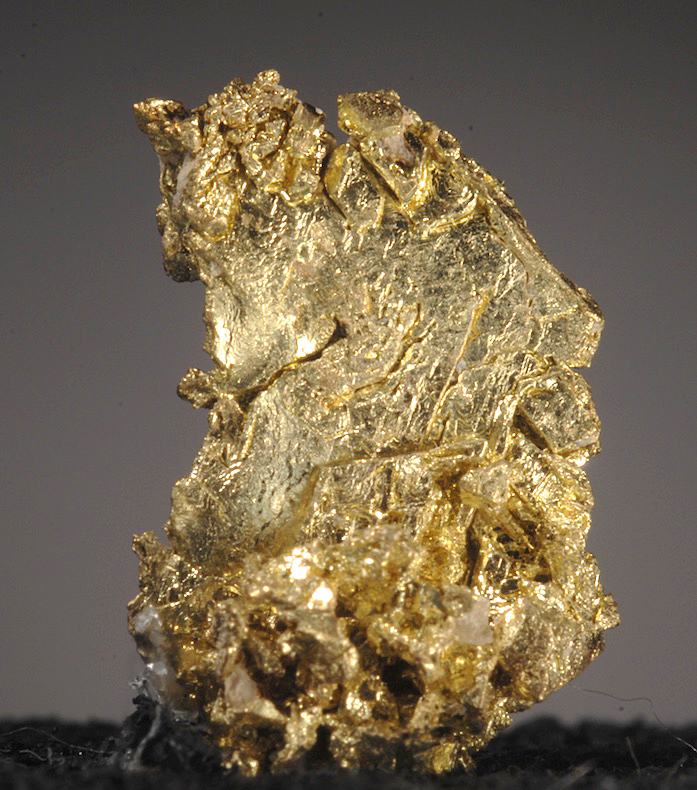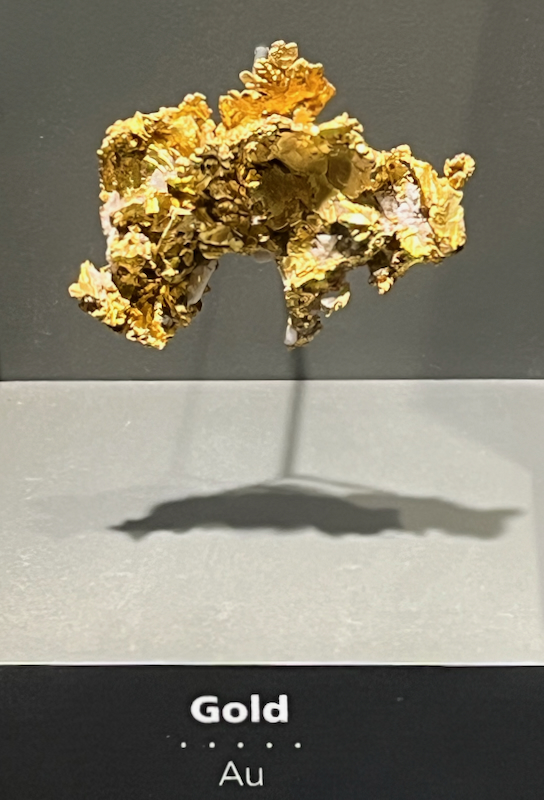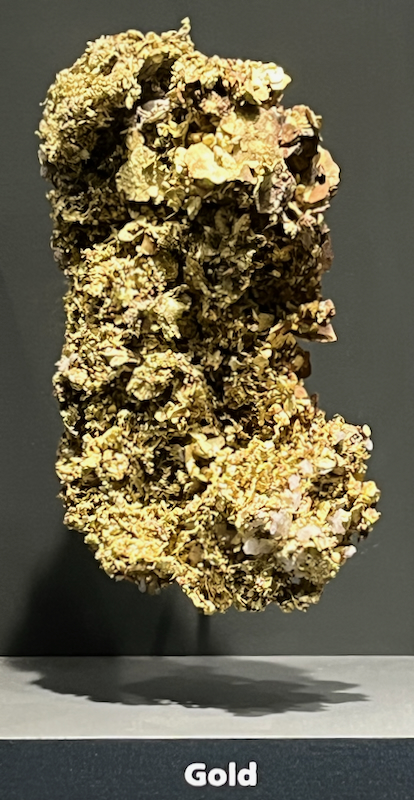Gold
Gold is one of those minerals that’s superlative (the best) in just about every way. It’s one of the heaviest metals, with a specific gravity higher than lead and just lower than platinum. It’s one of the best conductors of electricity. It resists tarnishing better than most metals. It’s one of the most valuable metals, and it’s considered the “gold standard” for investors who want an investment that will always be valuable. (If they name the standard after you, you know you’ve got to be good!) It’s both the metal that’s most often used to make expensive jewelry and a preferred metal for making connections in electronics. And it’s the most malleable metal—it can be spread out into sheets so thin that light passes through them and can be made into wires that are only one atom thick! Gold can also resist almost all acids, but it dissolves in cyanide. Since most of us don’t have a lot of cyanide laying around, you don’t have to worry about your gold suddenly melting. Although gold is rare and valuable, if you’re willing to take some time, you can find some gold by panning for gold in many places all around the world, and that’s all thanks to its specific gravity (it’ll sink to the bottom) and its malleability (it can get bashed around for thousands or millions of years but still hold together in ever-smaller flakes).
| Formula | Group or Type | Shape | Hardness | Specific Gravity | Streak | Luster |
|---|---|---|---|---|---|---|
| Au | — | Isometric | 2.5–3 | 15.5–19.3 | Yellow | Metallic to submetallic |



